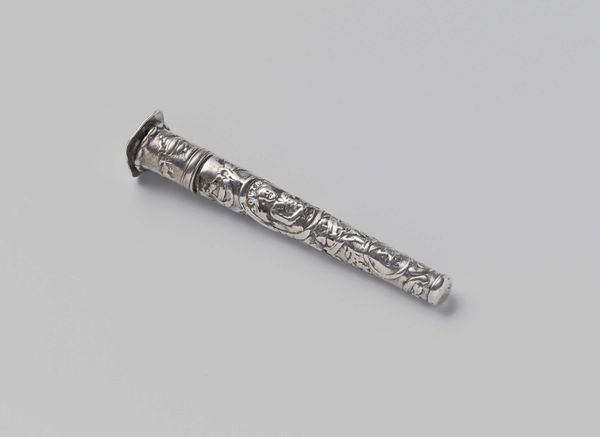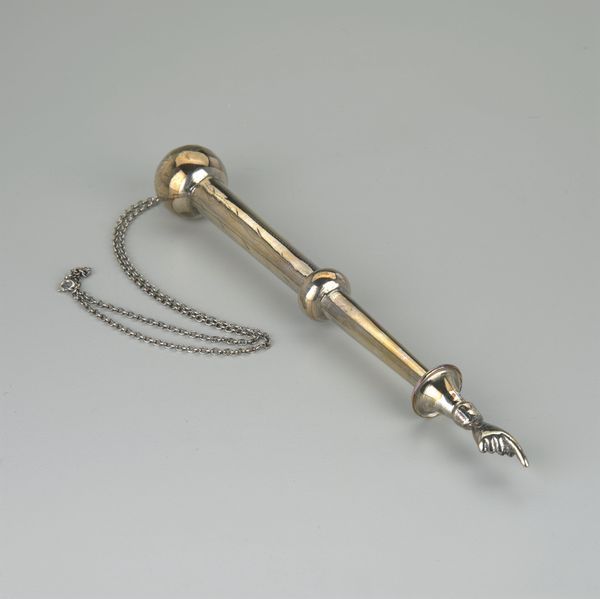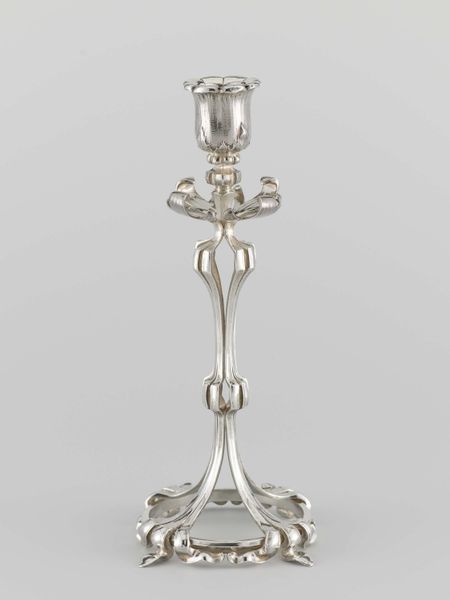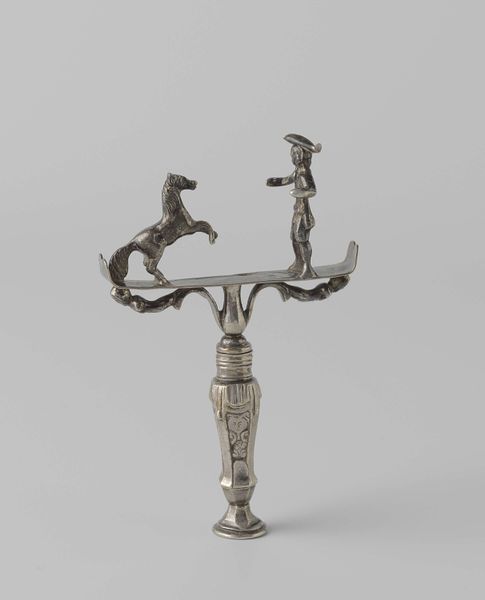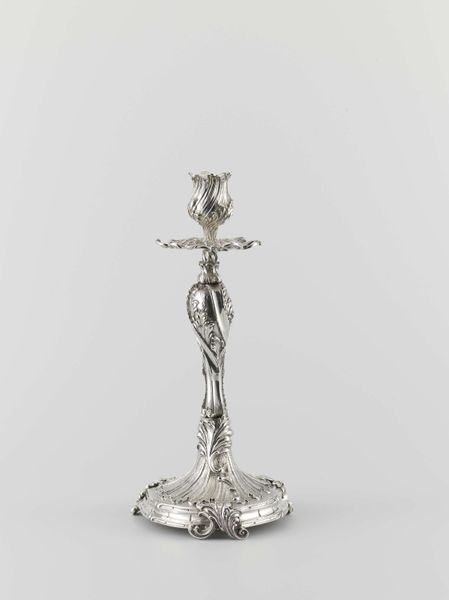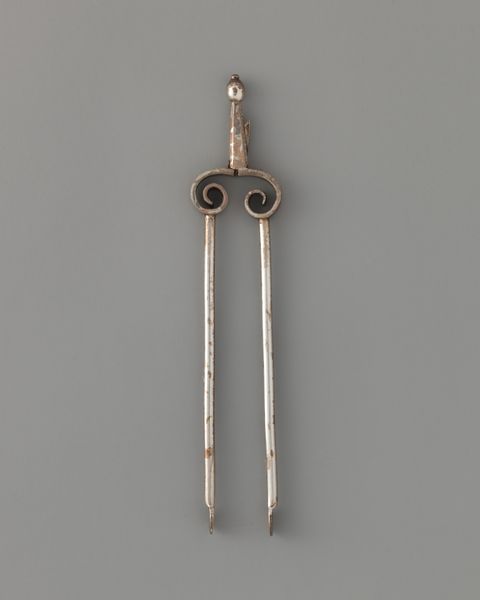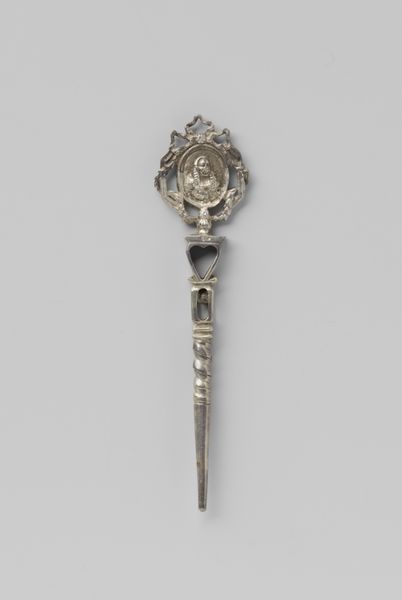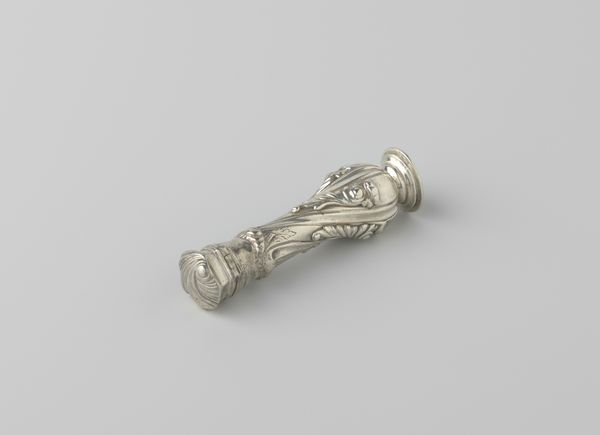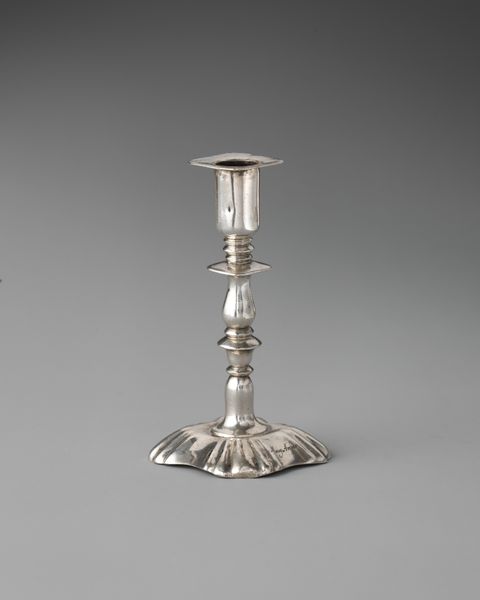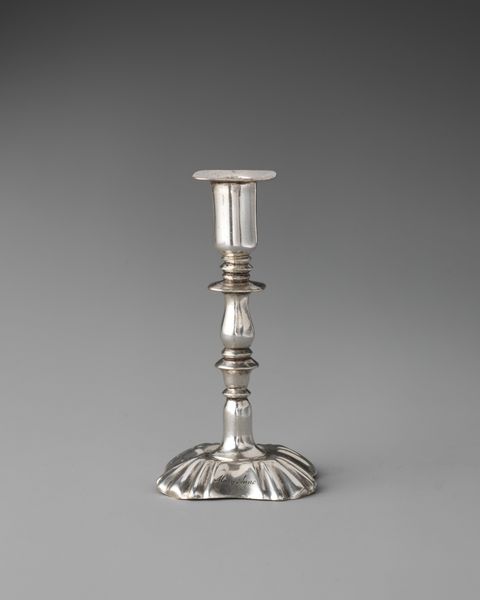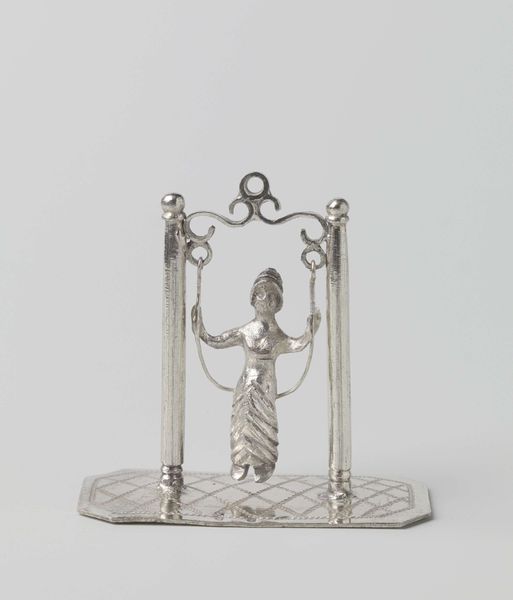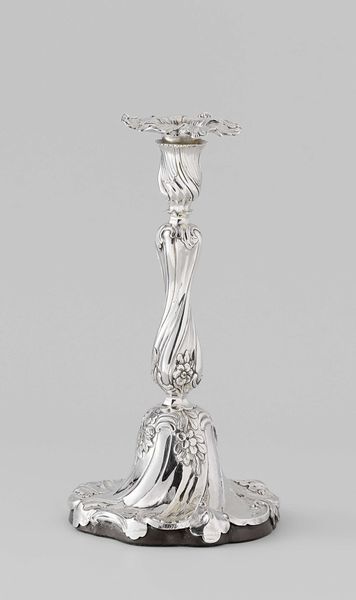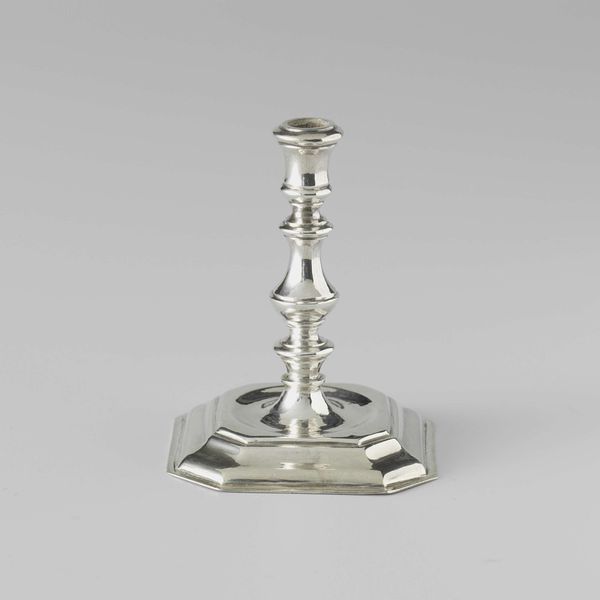
silver, metal, sculpture
#
silver
#
baroque
#
metal
#
sculpture
Dimensions: weight 47.88 gr, height 7.5 cm, height 12.8 cm, width 3.2 cm
Copyright: Rijks Museum: Open Domain
Curator: Welcome. We are standing before "Pijpenwroeter met cachet met monogram PG," a pipe tamper with seal and the initials PG, crafted from silver sometime between 1748 and 1772. It’s a beautiful example of Baroque metalwork. Editor: It's delicate, almost unsettlingly ornate for something that packs tobacco. There’s a density to the decoration which feels, symbolic. Curator: The choice of silver speaks volumes. Silver was a precious metal, increasingly accessible to the rising merchant class of the Dutch Golden Age. The tool itself moves between being a quotidian object, a seal which grants one power in document stamping, and an item of status, something ornate for display. Think of the labour: it must have been passed from journeyman to journeyman, through the workshop to achieve this high level of production and finesse. Editor: Absolutely. I’m particularly drawn to the tiny sculpted heads that sit around the loop – cherubic, almost grotesque, faces staring out. The initial “PG,” the monogram – it elevates a practical object to something intensely personal, suggesting identity and perhaps lineage. Also, pipes were a status symbol; pipes and tobacco often represent wealth and worldly engagement, which could link to a life well-lived. Curator: And that loop form would be used both as a handle and part of the weighting/tamping of the material. The maker clearly considered the ergonomics in hand, and then decorated that with an eye to status, both of which can co-exist. And how does this small artifact interact with Dutch society at the time it was fabricated, what needs and means of consumption does it support, what markets might the workshop need to feed, that "supply chain", if you will, from which the labour derives? Editor: And, conversely, how the act of pressing, or "sealing", literally making your mark, carries deep psychological resonance across cultures? Seals denote authority, possession, a lasting personal impression. It makes a quiet domestic act a profound symbolic action that stretches back through time and culture. It could link one to nobility, authority or to God... all just from something as trivial as tobacco! Curator: Quite. Looking at this microcosm in metal, it speaks to both the personal affectation and the production means through which something both beautiful and banal are made manifest, offering a material index through which to engage history itself. Editor: It all accumulates to an extraordinary concentration of significance within a humble tool, giving material expression to culture at work and at play.
Comments
No comments
Be the first to comment and join the conversation on the ultimate creative platform.
